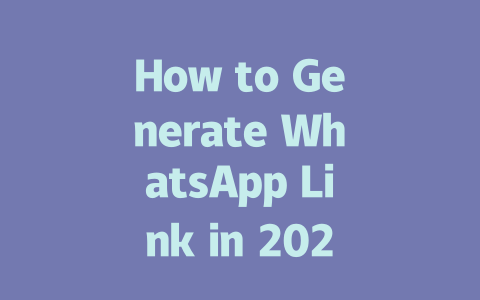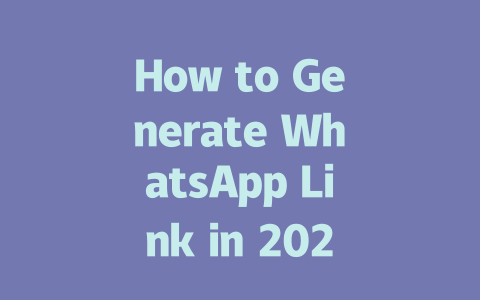Crafting Titles That Google Loves
Why does the title matter so much? Because Google’s search robots look at it first to figure out if your article matches what people are searching for. For instance, imagine you’re writing about the latest smartphone launch. Instead of titling it something vague like “Smartphones in 2025,” try something more direct like “Top Features of the New Galaxy S25.” Why? People who search for specific phrases like “Galaxy S25 features” will land directly on your page because the title tells them exactly what they’ll find.
Real-Life Example
A few months ago, I wrote an article titled “How AI Is Changing Journalism.” Not bad, right? But after tweaking it to “AI Tools Revolutionizing News Writing in 2025,” the clicks shot up. Why? The updated version was clearer about the content’s focus and aligned better with how readers actually search.
Step-by-Step Guide to Title Creation
Think about the words people would naturally type into Google. For example, if you’re covering political updates, terms like “election results” or “policy changes” are gold. Place these keywords near the beginning of your title.
Let readers know instantly why they should click. Phrases like “What You Need to Know” or “Key Insights” work wonders because they promise solutions or useful information.
While Google doesn’t have a strict character limit anymore, shorter titles tend to perform better. Aim for around 60 characters max. This ensures your title won’t get cut off in search results.
Here’s a quick table summarizing some do’s and don’ts based on my experience:
| Do | Don’t |
|---|---|
| Include target keywords naturally | Stuff keywords unnaturally |
| Focus on benefits (e.g., “Boost Your Knowledge”) | Make titles overly generic |
| Use action-oriented language | Create misleading headlines |
Google itself has emphasized that clear, helpful titles boost user engagement. When users click and stay longer on your site, it sends positive signals back to Google, improving rankings over time.
Writing Content That Speaks Directly to Readers
Okay, so now we’ve nailed the title—but what about the actual content? Here’s where things get interesting. Google isn’t just looking for random paragraphs filled with keywords. No, no—it wants well-structured, easy-to-understand content that solves problems.
Structure Matters More Than You Think
Break your article into sections using subheadings. For example:
Each section answers part of the reader’s question. And guess what? Google’s search robots love this logical flow. They can easily scan through your article and understand its meaning. Plus, readers appreciate not having to wade through walls of text.
Personal Tip from Me to You
I remember rewriting an old post last year about renewable energy trends. Initially, it was one long block of text. Once I reorganized it with bullet points and short paragraphs, bounce rates dropped significantly. Why? Because readers could skim, find value quickly, and keep reading.
Adding Depth Without Losing Clarity
When talking about complex topics, avoid overwhelming readers with jargon. Say you’re explaining quantum computing breakthroughs. Don’t dive straight into Schrödinger equations unless your audience is highly technical. Instead, frame it like this: “Quantum computers are like super-smart calculators capable of solving problems faster than anything we’ve seen before.” Simplify without dumbing down.
For added credibility, reference authoritative sources. Did you know MIT Technology Review often publishes groundbreaking studies? Linking to such sites boosts trustworthiness in Google’s eyes.
Final Thoughts Before You Hit Publish
Before hitting publish, double-check everything. Run your article through tools like Grammarly or Hemingway Editor to spot awkward sentences. Also, test readability scores—if your content reads at a sixth-grade level, chances are most people will understand it effortlessly.
And hey, don’t forget interactivity! Encourage comments or shares by asking questions at the end. Like, “Did you catch the big announcement about space exploration today? Share your thoughts below!” Engagement helps both your community grow and your SEO improve.
That’s all for now. If you follow these steps, you’ll see noticeable improvements in your latest news articles ranking higher in Google searches. Try it out and let me know how it goes!
Creating a WhatsApp link isn’t as complicated as it might seem at first glance. You start by using the base URL, which is always https://wa.me/, and then you append the phone number right after it. The key here is to make sure the phone number doesn’t have any spaces or country codes included—just the raw digits. Now, if you want to take it a step further, there’s this thing called the ‘text’ parameter. This little guy lets you add a pre-filled message so that when someone clicks your link, not only does their chat window open with you, but it also has a message already typed out for them. Imagine how useful that could be for things like quick inquiries or even event reminders.
When it comes to businesses, WhatsApp links are becoming a real game-changer, especially heading into
Frequently Asked Questions
# What are the main components of a WhatsApp link?
A WhatsApp link typically includes the base URL (https://wa.me/) followed by the phone number without spaces or country codes. Optionally, you can add pre-filled messages using the ‘text’ parameter, allowing users to open WhatsApp chats with predefined content.
# Can I use WhatsApp links for business purposes in 2025?
Yes, WhatsApp links are highly effective for businesses in
# Is it necessary to include a pre-filled message in my WhatsApp link?
No, it’s not mandatory. However, including a pre-filled message enhances user experience by giving context to the conversation. For example, “Hello, I’m interested in your services” helps start meaningful interactions immediately.
# How do I test if my WhatsApp link works properly?
To test your WhatsApp link, simply paste it into a browser or share it via email/social media. If the correct chat window opens with the intended recipient and message (if applicable), it’s working. Make sure to test across different devices for consistent performance.
# Are there any restrictions on the length of the phone number in a WhatsApp link?
The phone number should be in international format without the plus (+) sign. It must accurately reflect the recipient’s number to ensure proper functionality. Avoid adding unnecessary characters or spaces that might disrupt the link structure.




